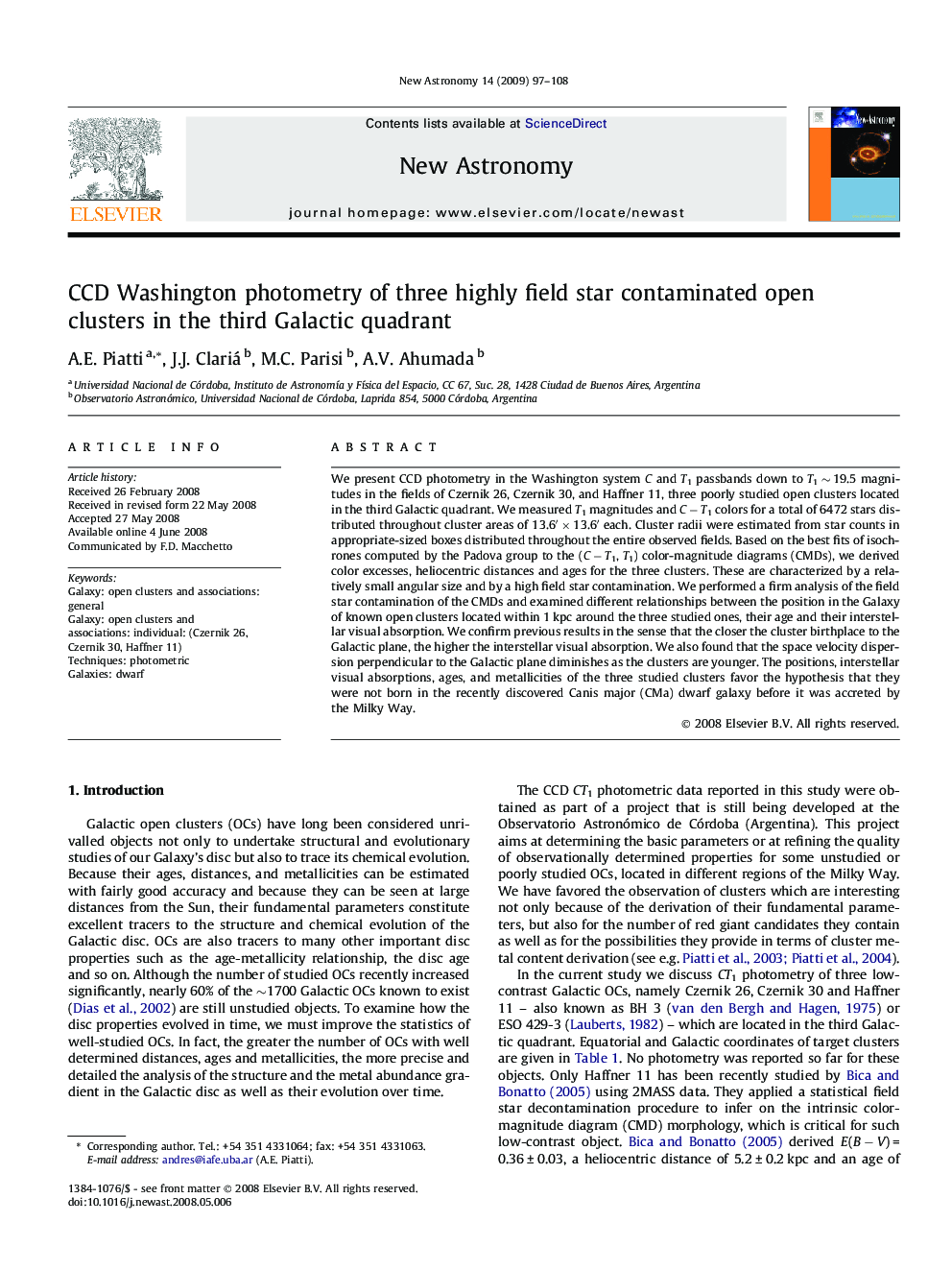| کد مقاله | کد نشریه | سال انتشار | مقاله انگلیسی | نسخه تمام متن |
|---|---|---|---|---|
| 1779234 | 1021983 | 2009 | 12 صفحه PDF | دانلود رایگان |

We present CCD photometry in the Washington system C and T1 passbands down to T1 ∼ 19.5 magnitudes in the fields of Czernik 26, Czernik 30, and Haffner 11, three poorly studied open clusters located in the third Galactic quadrant. We measured T1 magnitudes and C − T1 colors for a total of 6472 stars distributed throughout cluster areas of 13.6′ × 13.6′ each. Cluster radii were estimated from star counts in appropriate-sized boxes distributed throughout the entire observed fields. Based on the best fits of isochrones computed by the Padova group to the (C − T1, T1) color-magnitude diagrams (CMDs), we derived color excesses, heliocentric distances and ages for the three clusters. These are characterized by a relatively small angular size and by a high field star contamination. We performed a firm analysis of the field star contamination of the CMDs and examined different relationships between the position in the Galaxy of known open clusters located within 1 kpc around the three studied ones, their age and their interstellar visual absorption. We confirm previous results in the sense that the closer the cluster birthplace to the Galactic plane, the higher the interstellar visual absorption. We also found that the space velocity dispersion perpendicular to the Galactic plane diminishes as the clusters are younger. The positions, interstellar visual absorptions, ages, and metallicities of the three studied clusters favor the hypothesis that they were not born in the recently discovered Canis major (CMa) dwarf galaxy before it was accreted by the Milky Way.
Journal: New Astronomy - Volume 14, Issue 1, January 2009, Pages 97–108